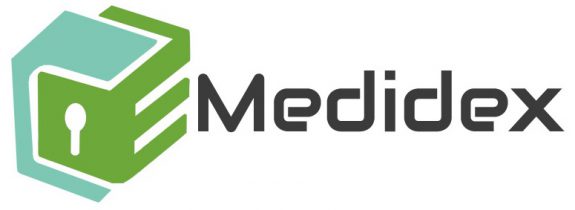Disclaimer:
Medidex is not a provider of medical services and all information is provided for the convenience of the user. No medical decisions should be made based on the information provided on this website without first consulting a licensed healthcare provider.This website is intended for persons 18 years or older. No person under 18 should consult this website without the permission of a parent or guardian.
TARCEVA
Overview
What is TARCEVA?
TARCEVA (erlotinib), a kinase inhibitor, is a quinazolinamine with the chemical name N-(3-ethynylphenyl)-6,7-bis(2-methoxyethoxy)-4-quinazolinamine. TARCEVA contains erlotinib as the hydrochloride salt that has the following structural formula:
Erlotinib hydrochloride has the molecular formula CHNO.HCl and a molecular weight of 429.90. The molecule has a pK of 5.42 at 25°C. Erlotinib hydrochloride is very slightly soluble in water, slightly soluble in methanol and practically insoluble in acetonitrile, acetone, ethyl acetate and hexane.
Aqueous solubility of erlotinib hydrochloride is dependent on pH with increased solubility at a pH of less than 5 due to protonation of the secondary amine. Over the pH range of 1.4 to 9.6, maximal solubility of approximately 0.4 mg/mL occurs at a pH of approximately 2.
TARCEVA tablets for oral administration are available in three dosage strengths containing erlotinib hydrochloride (27.3 mg, 109.3 mg and 163.9 mg) equivalent to 25 mg, 100 mg and 150 mg erlotinib and the following inactive ingredients: lactose monohydrate, hypromellose, hydroxypropyl cellulose, magnesium stearate, microcrystalline cellulose, sodium starch glycolate, sodium lauryl sulfate and titanium dioxide. The tablets also contain trace amounts of color additives, including FD&C Yellow #6 (25 mg only) for product identification.
What does TARCEVA look like?






What are the available doses of TARCEVA?
Tablets: 25 mg, 100 mg, and 150 mg ()
What should I talk to my health care provider before I take TARCEVA?
Lactation: Do not breastfeed ()
How should I use TARCEVA?
TARCEVA is indicated for:
Limitations of use:
• Safety and efficacy of TARCEVA have not been established in patients with NSCLC whose tumors have other EGFR mutations
• TARCEVA is not recommended for use in combination with platinum-based chemotherapy .
Select patients for the treatment of metastatic NSCLC with TARCEVA based on the presence of EGFR exon 19 deletions or exon 21 (L858R) substitution mutations in tumor or plasma specimens . If these mutations are not detected in a plasma specimen, test tumor tissue if available. Information on FDA-approved tests for the detection of EGFR mutations in NSCLC is available at: .
What interacts with TARCEVA?
Sorry No Records found
What are the warnings of TARCEVA?
Sorry No Records found
What are the precautions of TARCEVA?
Sorry No Records found
What are the side effects of TARCEVA?
Sorry No records found
What should I look out for while using TARCEVA?
None.
What might happen if I take too much TARCEVA?
Withhold TARCEVA in patients with an overdose or suspected overdose and institute symptomatic treatment.
How should I store and handle TARCEVA?
Store at 20°-25°C (68°-77°F) [see USP Controlled Room Temperature]; excursions permitted to 15°-30°C (59°-86°F).Dispense accompanying Medication Guide to each patient.Store at 20°-25°C (68°-77°F) [see USP Controlled Room Temperature]; excursions permitted to 15°-30°C (59°-86°F).Dispense accompanying Medication Guide to each patient.25 mg Tablets: round, biconvex face and straight sides, white film-coated, printed in orange with a “T” and “25” on one side and plain on the other side; supplied in: Bottles of 30: NDC 50242-062-01100 mg Tablets: round, biconvex face and straight sides, white film-coated, printed in gray with “T” and “100” on one side and plain on the other side; supplied in:Bottles of 30: NDC 50242-063-01150 mg Tablets: round, biconvex face and straight sides, white film-coated, printed in maroon with “T” and “150” on one side and plain on the other side; supplied in:Bottles of 30: NDC 50242-064-01Store at 25°C (77°F); excursions permitted to 15°C - 30°C (59°F - 86°F). See USP Controlled Room Temperature.25 mg Tablets: round, biconvex face and straight sides, white film-coated, printed in orange with a “T” and “25” on one side and plain on the other side; supplied in: Bottles of 30: NDC 50242-062-01100 mg Tablets: round, biconvex face and straight sides, white film-coated, printed in gray with “T” and “100” on one side and plain on the other side; supplied in:Bottles of 30: NDC 50242-063-01150 mg Tablets: round, biconvex face and straight sides, white film-coated, printed in maroon with “T” and “150” on one side and plain on the other side; supplied in:Bottles of 30: NDC 50242-064-01Store at 25°C (77°F); excursions permitted to 15°C - 30°C (59°F - 86°F). See USP Controlled Room Temperature.25 mg Tablets: round, biconvex face and straight sides, white film-coated, printed in orange with a “T” and “25” on one side and plain on the other side; supplied in: Bottles of 30: NDC 50242-062-01100 mg Tablets: round, biconvex face and straight sides, white film-coated, printed in gray with “T” and “100” on one side and plain on the other side; supplied in:Bottles of 30: NDC 50242-063-01150 mg Tablets: round, biconvex face and straight sides, white film-coated, printed in maroon with “T” and “150” on one side and plain on the other side; supplied in:Bottles of 30: NDC 50242-064-01Store at 25°C (77°F); excursions permitted to 15°C - 30°C (59°F - 86°F). See USP Controlled Room Temperature.25 mg Tablets: round, biconvex face and straight sides, white film-coated, printed in orange with a “T” and “25” on one side and plain on the other side; supplied in: Bottles of 30: NDC 50242-062-01100 mg Tablets: round, biconvex face and straight sides, white film-coated, printed in gray with “T” and “100” on one side and plain on the other side; supplied in:Bottles of 30: NDC 50242-063-01150 mg Tablets: round, biconvex face and straight sides, white film-coated, printed in maroon with “T” and “150” on one side and plain on the other side; supplied in:Bottles of 30: NDC 50242-064-01Store at 25°C (77°F); excursions permitted to 15°C - 30°C (59°F - 86°F). See USP Controlled Room Temperature.
Clinical Information
Chemical Structure
No Image foundClinical Pharmacology
Epidermal growth factor receptor (EGFR) is expressed on the cell surface of both normal and cancer cells. In some tumor cells signaling through this receptor plays a role in tumor cell survival and proliferation irrespective of EGFR mutation status. Erlotinib reversibly inhibits the kinase activity of EGFR, preventing autophosphorylation of tyrosine residues associated with the receptor and thereby inhibiting further downstream signaling. Erlotinib binding affinity for EGFR exon 19 deletion or exon 21 (L858R) mutations is higher than its affinity for the wild type receptor. Erlotinib inhibition of other tyrosine kinase receptors has not been fully characterized.
Non-Clinical Toxicology
None.No drug interactions have been identified. Studies with famotidine in man, in animal models, and have shown no significant interference with the disposition of compounds metabolized by the hepatic microsomal enzymes, e.g., cytochrome P450 system. Compounds tested in man include warfarin, theophylline, phenytoin, diazepam, aminopyrine and antipyrine. Indocyanine green as an index of hepatic drug extraction has been tested and no significant effects have been found.
Cases of serious ILD, including fatal cases, can occur with TARCEVA treatment. The overall incidence of ILD in approximately 32,000 TARCEVA-treated patients in uncontrolled studies and studies with concurrent chemotherapy was approximately 1.1%. In patients with ILD, the onset of symptoms was between 5 days to more than 9 months (median 39 days) after initiating TARCEVA therapy.
Withhold TARCEVA for acute onset of new or progressive unexplained pulmonary symptoms such as dyspnea, cough, and fever pending diagnostic evaluation. If ILD is confirmed, permanently discontinue TARCEVA .
The following serious adverse reactions, which may include fatalities, are discussed in greater detail in other sections of the labeling:
Reference
This information is obtained from the National Institute of Health's Standard Packaging Label drug database.
"https://dailymed.nlm.nih.gov/dailymed/"
While we update our database periodically, we cannot guarantee it is always updated to the latest version.
Review
Professional
Clonazepam Description Each single-scored tablet, for oral administration, contains 0.5 mg, 1 mg, or 2 mg Clonazepam, USP, a benzodiazepine. Each tablet also contains corn starch, lactose monohydrate, magnesium stearate, microcrystalline cellulose, and povidone. Clonazepam tablets USP 0.5 mg contain Yellow D&C No. 10 Aluminum Lake. Clonazepam tablets USP 1 mg contain Yellow D&C No. 10 Aluminum Lake, as well as FD&C Blue No. 1 Aluminum Lake. Chemically, Clonazepam, USP is 5-(o-chlorophenyl)-1,3-dihydro-7-nitro-2H-1,4-benzodiazepin-2-one. It is a light yellow crystalline powder. It has the following structural formula: C15H10ClN3O3 M.W. 315.72Tips
Tips
Interactions
Interactions
A total of 440 drugs (1549 brand and generic names) are known to interact with Imbruvica (ibrutinib). 228 major drug interactions (854 brand and generic names) 210 moderate drug interactions (691 brand and generic names) 2 minor drug interactions (4 brand and generic names) Show all medications in the database that may interact with Imbruvica (ibrutinib).

